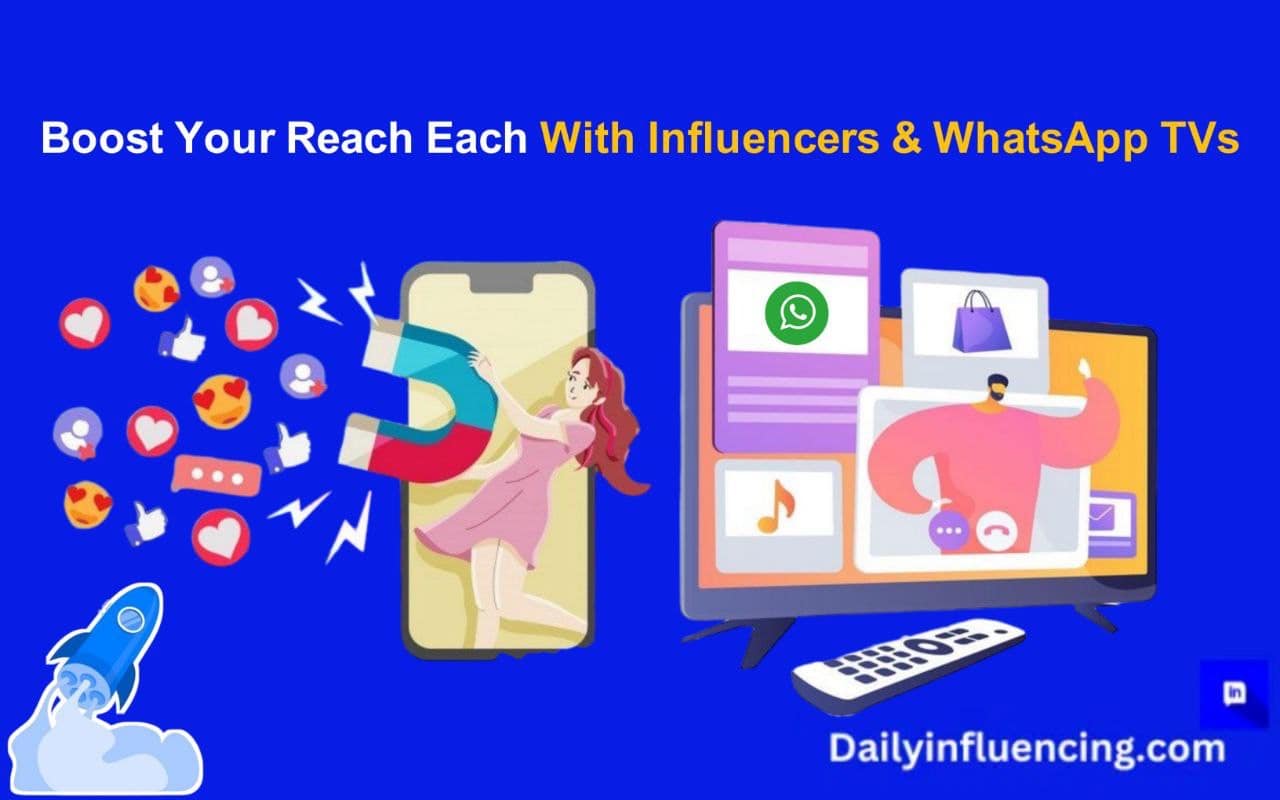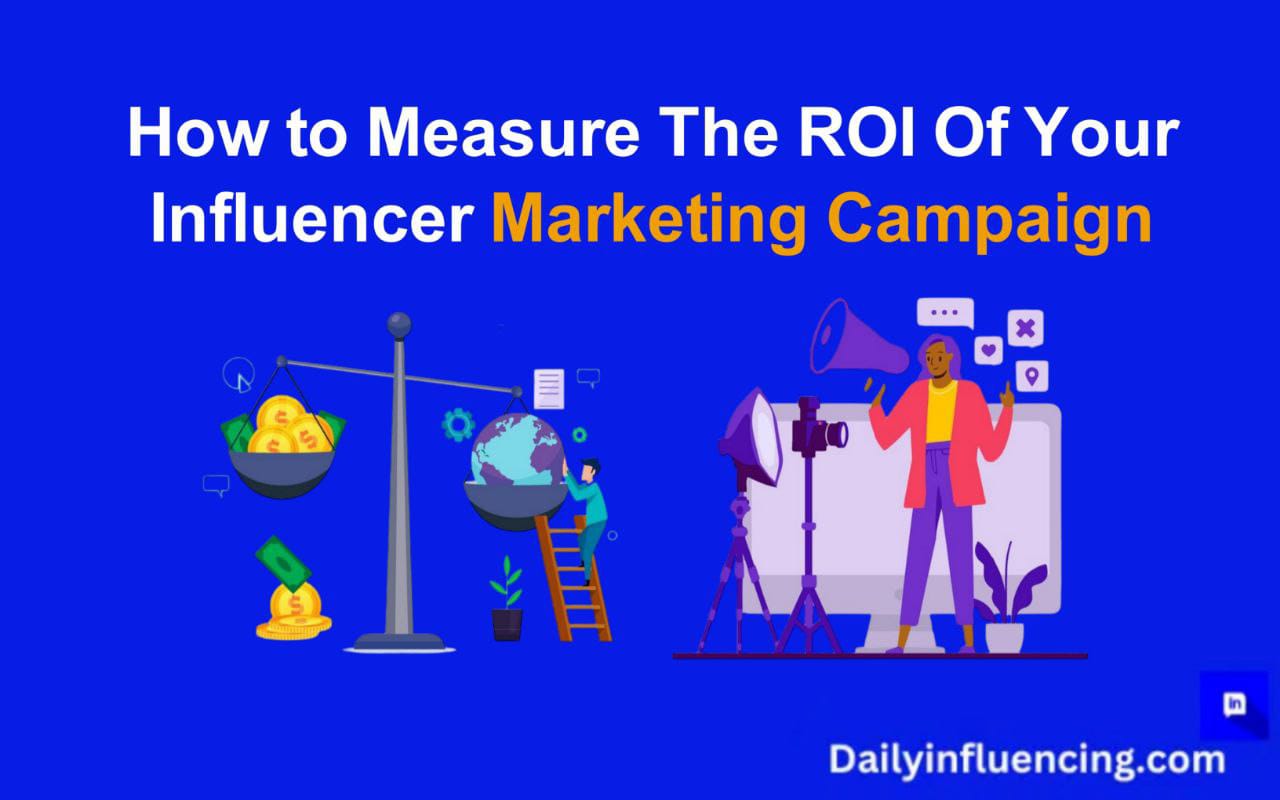
Before jumping headfirst into influencer marketing, here’s a truth you need to hear: measuring influencer marketing ROI is non-negotiable if you’re aiming for impact.
You can throw money at influencers, secure big names and create exciting campaigns, but without the numbers to prove it, you’re flying blind.
For every dime spent on influencer marketing, you need to know exactly what that money does. Most times, brands assume they’re getting results simply because they’re getting likes, comments, and follows. But is that really translating to business growth?
In this article, we’ll cover the exact steps to track, analyze, and calculate the ROI of your influencer marketing efforts. We’ll break down the metrics and strategies to help you measure real returns—so you’re not just burning cash but building brand impact.
But before diving into metrics and measurement, let’s get clear on what influencer marketing actually is.
Understanding Influencer Marketing
Influencer marketing involves partnering with individuals who already have the audience and influence you’re looking to tap into. This goes beyond getting mere likes: it’s about driving awareness, engagement, and conversion.
Measuring influencer marketing ROI becomes very important to ensure these partnerships actually impact your bottom line.
Most times, influencers are classified into three main categories: micro, macro, and mega influencers. Each type offers a unique advantage, depending on the specific goals of your campaign.
Micro-influencers, for instance, may have a smaller following but often boast higher engagement rates, making them ideal for building trust and loyalty with niche audiences.
On the other end, mega influencers have the reach, potentially driving massive awareness for your brand. ROI for each influencer type varies widely.
Before choosing influencers, recognize that these partnerships should align with your marketing metrics and overall brand objectives. Influencer marketing works best when it’s targeted and measurable.
With the right metrics in place, you’ll be able to track campaign performance effectively, ensuring that measuring your influencer marketing ROI is streamlined and aligned with the growth goals of your business.
Key Steps in Measuring Influencer Marketing ROI
No more guessing or crossing your fingers for engagement. You need to track exactly what each campaign is worth, and that’s where measuring influencer marketing ROI gets serious.
Here’s how to measure your influencer campaigns with precision.
1. Define Clear Objectives: Know What You’re Aiming For
Before you even hit “send” on that influencer contract, ask yourself: what’s the purpose? The first step in measuring influencer marketing ROI is knowing what you want to achieve. Are you trying to boost brand awareness? Increase engagement? Drive conversions?
- Brand Awareness: If you’re focusing on visibility, you’ll want to track reach, impressions, and follower growth. Maybe you want to increase your audience by 20% by the end of the campaign. That’s measurable.
- Engagement: Want people interacting with your brand? Track likes, shares, comments, and other forms of engagement. Set a target, like increasing engagement by 30% over your last campaign.
- Conversions and sales: This is the most straightforward goal for ROI. Set a conversion target—say, a 10% boost in sales over a three-month period. Conversion metrics make ROI calculation concrete.
Defining objectives is the foundation of the entire process. Each goal you set should have its own corresponding metric, so you know exactly what you’re measuring.
Here’s a tip; If you’re running a multi-influencer campaign, tailor goals for each influencer. Influencers with smaller, more engaged audiences may perform better with engagement goals, while macro-influencers are often better suited for reach-based goals.
2. Track Performance Metrics That Matter: Go Beyond Vanity
Most brands look at basic metrics like views, likes, or followers and think that’s enough. But if those numbers don’t connect to actual business growth, they’re just noise.
Here’s a breakdown of metrics that give you real insight into ROI:
Engagement Rate: Likes, shares, comments—engagement rate tells you if people are actively responding to the content. Calculate it by dividing total interactions by total reach. A high engagement rate means the influencer’s audience is actually interested, not just passively following.
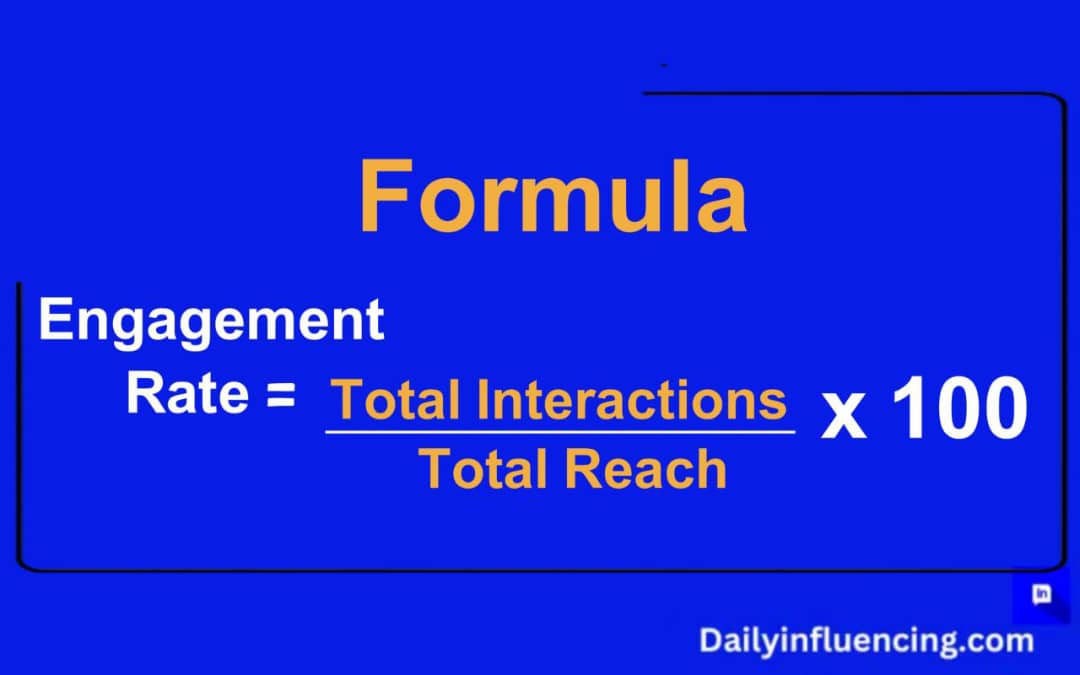
Click-Through Rate (CTR): If the goal is driving traffic, CTR shows how effective the influencer is at generating interest. Track clicks on links to your website, product page, or any CTA (call-to-action) you provided.
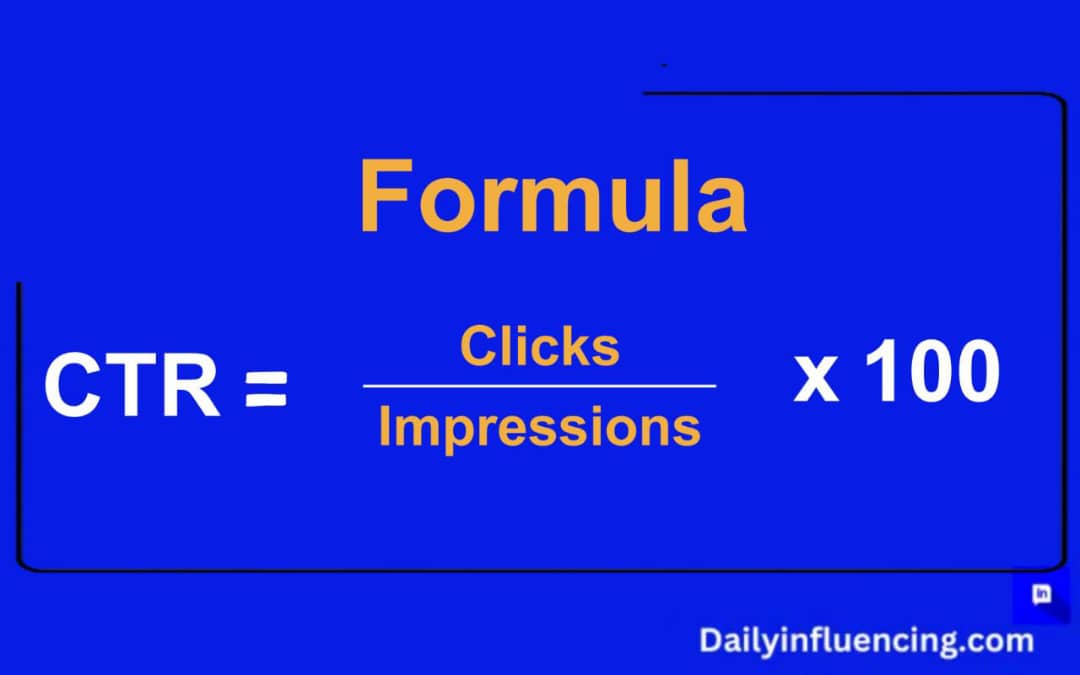
Conversion Rate: This is the ultimate bottom-line metric, whether that’s purchases, sign-ups, or any desired action. It tells you if all that interest is actually translating into results.

Cost Per Acquisition (CPA): Divide the total cost of the campaign by the number of successful conversions (sales or sign-ups).
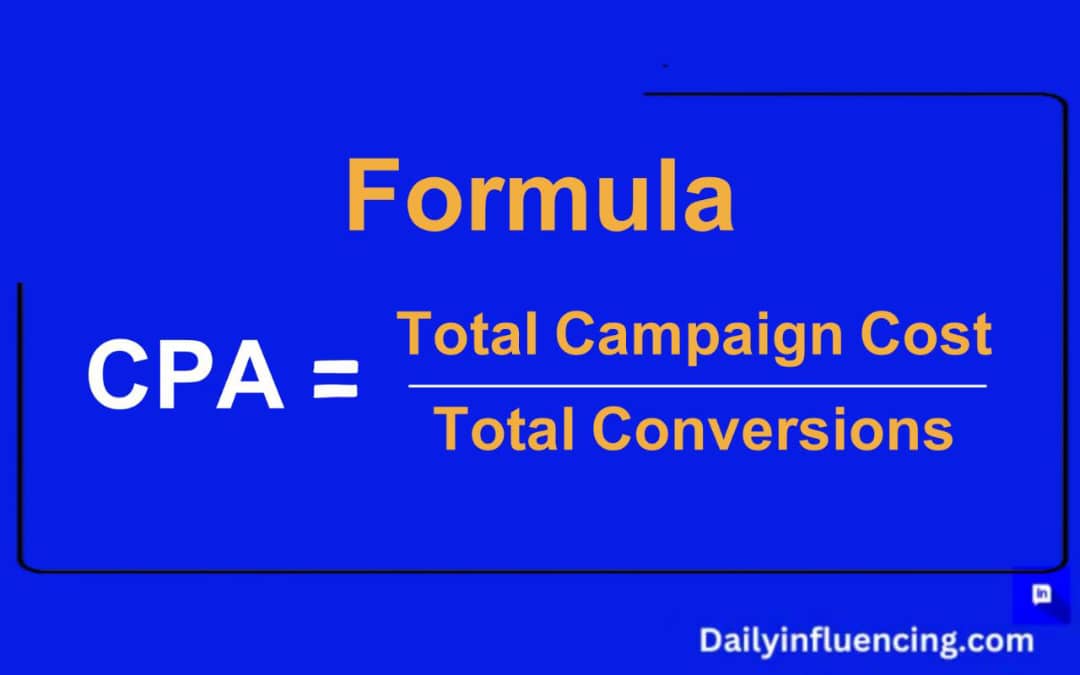
Set up tracking links or codes to precisely monitor these metrics. If you’re working with multiple influencers, use unique links for each one to track performance individually.
3. Calculate Total Costs: Know the Real Investment
To measure ROI accurately, you need a complete breakdown of all campaign costs. Many brands focus only on influencer fees and ignore other expenses, which skews ROI calculations. Here’s what to include:
- Influencer fees: The cost paid to each influencer, whether it’s a flat fee, a product trade, or a combination
- Product costs: If you’re gifting products, calculate the value. This includes shipping and handling expenses too.
- Ad spend: If you’re amplifying influencer content with paid ads, add those costs to the campaign total.
- Internal costs: Factor in the time your team spends managing the campaign, especially if it’s extensive. You can calculate this based on hourly rates or time logged.
Let’s say you’re running a campaign with a $10,000 influencer fee, $2,000 in product costs, and $1,500 on paid ads. The full campaign cost is $13,500—this is the number you’ll use in your ROI formula.
4. Apply the ROI Formula: The Moment of Truth
Now that you know the campaign’s total cost, it’s time to calculate ROI. Remember, ROI shows you what you’re getting back for each dollar spent.
Here’s the formula in action:
ROI Formula: ROI = (Net Profit / Cost of Investment) x 100
Say your campaign brought in $30,000 in revenue. Subtract the campaign cost of $13,500, which leaves you with a net profit of $16,500. Plugging in the numbers:
ROI Calculation: ROI = ($16,500 / $13,500) x 100 = 122%
This 122% ROI means you’re getting back more than double your initial investment. But if the ROI is under 100%, it’s a signal that something needs to change in your approach.
Run this formula individually for each influencer to see who delivered the best return. This data can guide future partnerships.
5. Analyze and Optimize: Turn Data Into Strategy
Once you know which influencers, content types, or platforms drove the best ROI, leverage those insights to refine your strategy.
Here’s how:
- Identify high-performers: Were there influencers who delivered exceptional ROI? Consider long-term partnerships with them, as they’ve proven to drive value.
- Adjust content types: Maybe video posts drove higher engagement than static images, or maybe carousels boosted CTR. Use this data to plan future content.
- Refine targeting: If certain audience segments converted more, adjust your influencer selection to better match those demographics.
- Reallocate budget: Put more budget behind high-performing influencers or content types and cut spending on underperformers.
You can decide to schedule a post-campaign review with your team, analyze each metric, and decide on concrete next steps.
Repeat this process with every campaign, and you’ll see ROI improve as you continuously optimize based on real data.
Measuring influencer marketing ROI isn’t a one-time task. This is a repeatable process for smarter, data-backed decision-making every single time.
Common Mistakes to Avoid When Measuring Influencer Marketing ROI
Now that you’re equipped with the tools to measure ROI, let’s talk about some common mistakes that can throw off your results and lead to misinformed decisions.
Measuring influencer marketing ROI isn’t foolproof, and even small errors can lead to costly missteps.
Here’s how to dodge those pitfalls and keep your ROI data as accurate as possible.
1. Relying on Vanity Metrics Alone
Vanity metrics—likes, follows, and views—are often the first things brands look at. But while they can indicate initial interest, they don’t directly impact ROI.
Many brands fall into the trap of assuming large numbers mean success, but if those metrics aren’t tied to conversions or engagement, they’re just noise.
Example of pitfall: You run a campaign that gains 10,000 likes but results in only 2 conversions. Those likes don’t translate to ROI, meaning you’re spending without generating real impact.
Solution: Prioritize actionable metrics like engagement rate, CTR, and conversion rate. These will tell you if your campaign is actually driving value rather than just catching attention.
2. Overlooking Costs in ROI Calculation
One of the biggest mistakes brands make is underestimating campaign costs. Many only consider influencer fees and ignore product costs, ad spend, and internal expenses. This leads to an inflated ROI, which may look impressive but doesn’t reflect true profitability.
Example of Pitfall: You calculate ROI based solely on the $5,000 you paid the influencer, forgetting an additional $2,000 in ad spend and $1,000 in product shipping costs. Suddenly, that ROI figure isn’t as high as it seemed.
Solution: Always calculate your full campaign investment, including all hidden and peripheral costs. Every dollar that goes toward the campaign affects your ROI, so track it carefully.
3. Not Setting a Consistent Measurement Window
Timing is important in measuring influencer marketing ROI. Many brands check metrics too soon after a campaign launches or wait too long, leading to inconsistent data.
Social media often shows initial spikes in engagement, but conversions may come later, especially if it’s a high-involvement purchase.
Example of Pitfall: You analyze campaign data two days after launch, when only a fraction of the conversions may have happened. This snapshot doesn’t capture the full ROI, making the campaign look underwhelming.
Solution: Set a standardized measurement window for each campaign, depending on your industry’s typical buying cycle. For example, track initial metrics at two weeks, and finalize ROI analysis at one month to capture late conversions.
4. Neglecting Influencer-Specific Tracking
Influencers aren’t one-size-fits-all, and performance varies widely based on their audience, content style, and alignment with your brand. Failing to track individual influencer performance can lead to ineffective partnerships and wasted budget.
Example of Pitfall: You run a multi-influencer campaign but don’t use individual tracking links, making it impossible to see which influencers drove sales and which didn’t. You might mistakenly continue partnerships with underperformers, losing potential ROI.
Solution: Use unique tracking links or codes for each influencer, so you can directly attribute results to each partnership. Analyze this data to determine which influencers yield the best returns, and use it to inform future collaborations.
5. Ignoring the Long-Term Impact of Measuring Influencer Marketing ROI
Sometimes, the return on investment doesn’t show up immediately. For brand awareness-focused campaigns, the impact may be subtle and accumulate over time, making it easy to undervalue these efforts if you’re only looking for immediate sales.
Example of Pitfall: You run an awareness campaign but don’t see an immediate uptick in sales, so you conclude it wasn’t successful. A few months later, however, there’s a noticeable rise in brand mentions and organic traffic, showing the delayed impact of awareness.
Solution: With awareness campaigns, establish a separate set of KPIs, like brand recall, follower growth, or organic engagement. Track these metrics over time, and pair them with conversion-focused campaigns for a full-funnel approach.
By watching for these pitfalls and following a detailed approach to measuring influencer marketing ROI, you’re setting yourself up for campaigns that actually drive value.
Keep the focus on actionable metrics, comprehensive cost tracking, and individualized performance data to build a strategy that delivers consistently stronger results over time.
Conclusion
Influencer marketing, when leveraged correctly, can lead to substantial business growth. In fact, studies show that businesses earn an average of $6.50 for every $1 spent on influencer marketing.
That’s a clear indicator that when you invest wisely, the returns can be significant.
The key to unlocking these benefits lies in your approach to measuring influencer marketing ROI.
Mind you, measuring influencer marketing ROI isn’t just about showing that your campaign worked; it’s about knowing how well it worked and where to double down.
Frequently Asked Questions (FAQs)
1. What’s the most important metric for measuring influencer marketing success?
Conversion rate is critical as it directly reflects how many followers took action, though engagement rate is also essential for gauging audience interest.
2. How do I choose the right influencers?
Look for influencers whose audience demographics align with your target market and who have a high engagement rate with their followers.
3. How soon should I measure ROI after a campaign?
For most campaigns, wait 2-4 weeks to capture conversions and post-campaign engagement fully.
4. What’s the difference between reach and engagement?
Reach is the number of people who see the content, while engagement measures how many actively interacted through likes, comments, or shares.
5. Can I measure brand awareness from influencer campaigns?
Yes, track metrics like follower growth, mentions, and website visits to gauge the impact on brand awareness.
6. Should I work with multiple influencers or just one?
Multiple influencers can widen reach and diversify audience engagement, but balance this with your budget and goals.
7. How can I ensure influencers are delivering real engagement?
Use analytics tools to verify metrics and look out for high-quality, authentic interactions rather than inflated follower counts.
8. Do I need to use unique tracking links for influencers?
Yes, unique links or discount codes help you accurately track conversions and attribute results to specific influencers.
9. How do I know if an influencer campaign is cost-effective?
If the ROI percentage from conversions outweighs the total investment, it’s cost-effective; use this metric as a benchmark for future campaigns.



